What is a type 7 enclosure?
In hazardous industrial environments where flammable gases or vapors may be present, standard electrical enclosures pose significant safety risks that require specialized engineering solutions. The National Electrical Manufacturers Association (NEMA) Type 7 standard addresses these critical safety concerns by defining specific requirements for enclosures designed exclusively for hazardous locations classified under Class I, Division 1 specifications. These environments demand equipment that can prevent catastrophic incidents while maintaining operational reliability. When integrated with advanced acoustic engineering principles, a diesel generator sound attenuated enclosure meeting NEMA Type 7 requirements provides a comprehensive solution that addresses both explosion-proof safety protocols and effective noise control measures, creating an optimal configuration for the most challenging industrial settings where both safety and environmental considerations are paramount.
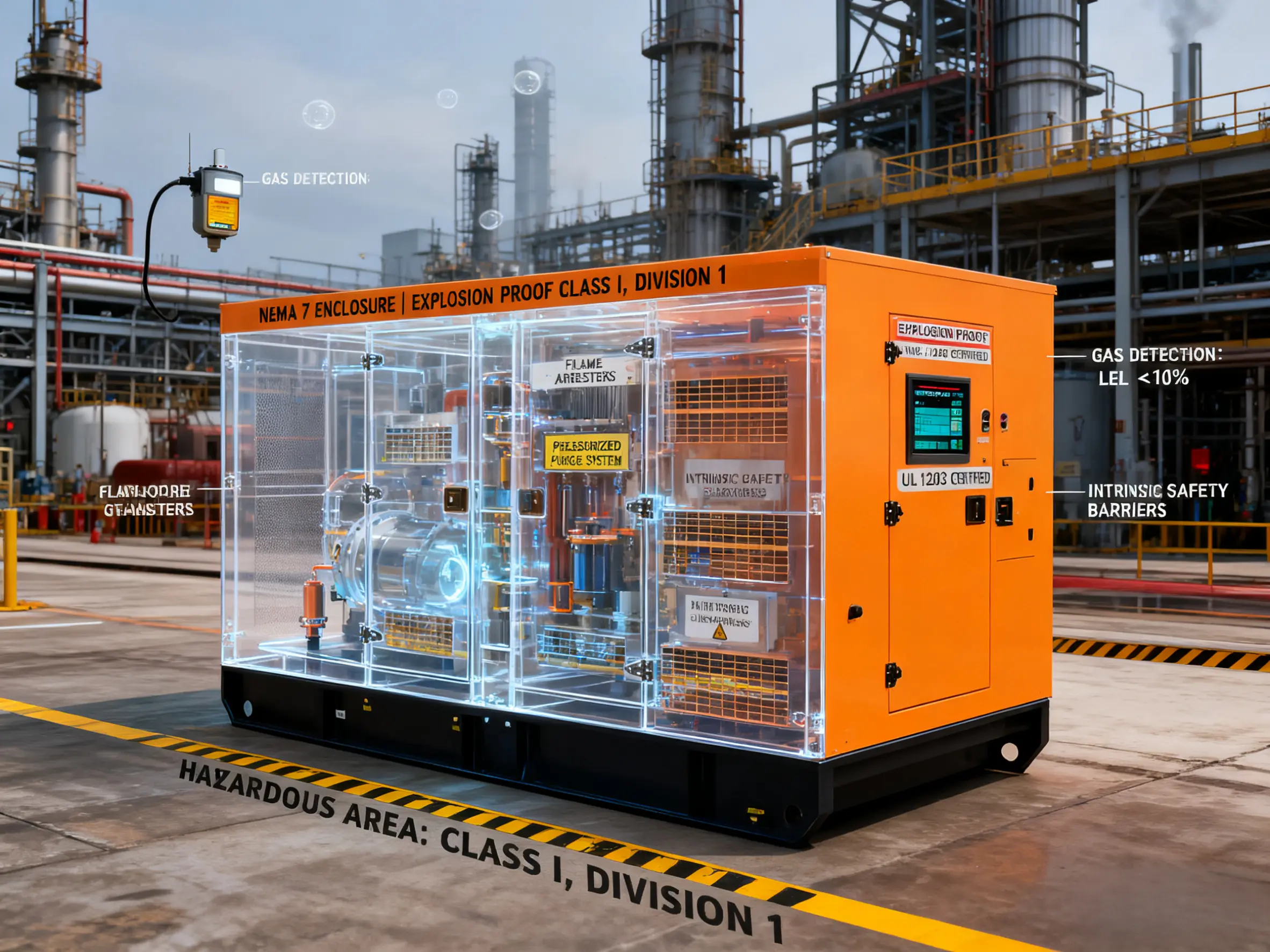
Definition and Standards
A NEMA Type 7 enclosure represents the highest level of protection for electrical equipment operating in environments where flammable gases or vapors may exist under normal operating conditions. These enclosures are specifically engineered to withstand and contain an internal explosion without allowing the ignition to propagate to the external hazardous atmosphere. The certification process involves rigorous testing protocols that evaluate the enclosure's ability to contain specific gas explosions while maintaining structural integrity and operational safety at defined temperature ranges. The standards governing these enclosures require compliance with multiple safety factors, including pressure containment capabilities, flame path engineering, and temperature rise limitations. When configured as a diesel generator sound attenuated enclosure, the design must maintain dual objectives of explosion-proof integrity and acoustic performance, requiring specialized engineering approaches that address the conflicting demands of ventilation requirements for both explosion prevention and noise control. This complex integration involves sophisticated engineering solutions that balance safety mandates with environmental considerations.
Structural Features and Design Characteristics
Type 7 enclosures incorporate multiple layers of protection through specific design elements that ensure maximum safety in explosive environments while maintaining functional efficiency:
Explosion-Containment Engineering:
Heavy-duty construction methodologies with reinforced joints and seams designed to withstand significant internal pressures
Advanced flame-path technology that cools escaping gases below ignition temperatures through precisely engineered surfaces
Pressure-resistant door and cover designs utilizing mathematical models to predict and contain explosion forces
Certified explosion-proof conduit connections with specialized sealing compounds and threading specifications
Internal arc-resistant components that prevent ignition sources within the enclosure
Materials Science and Construction Techniques:
Cast aluminum or heavy-gauge steel construction with specific wall thickness requirements
Corrosion-resistant coatings and materials selected for chemical compatibility with hazardous substances
Precision-machined flanges and surfaces ensuring perfect mating of explosion-proof joints
Tamper-resistant fasteners and hardware preventing unauthorized access or modification
Non-sparking materials in all external components to prevent secondary ignition sources
Thermal Management and Ventilation Systems:
Explosion-proof ventilation systems with certified motors and fan assemblies
Pressurized enclosure options maintaining positive internal pressure
Heat dissipation calculations accounting for worst-case scenario operations
Internal temperature monitoring with automatic shutdown capabilities
Heat exchange systems designed for hazardous environment compatibility
Acoustic Integration Methodologies:
Specialized sealing systems maintaining both acoustic and explosion-proof properties through advanced material science
Vibration damping materials meeting hazardous location requirements while providing noise reduction
Ventilation silencers designed for explosion-proof operation with specific attenuation characteristics
Access panels maintaining integrity of both safety systems through engineered compromise solutions
Sound absorption materials tested for compatibility with hazardous atmospheres
Applications and Advantages
Type 7 enclosures serve critical safety functions across numerous high-risk industrial applications where standard equipment would create unacceptable hazards:
Critical Industrial Applications:
Petroleum refineries and chemical processing plants handling volatile substances
Fuel storage facilities and distribution centers with vapor accumulation risks
Pharmaceutical manufacturing facilities using solvent-based processes
Mining operations with methane gas exposure risks in confined spaces
Wastewater treatment plants with potential methane production areas
Aircraft refueling operations and fuel farm installations
Chemical storage warehouses and processing areas
Comprehensive Safety Advantages:
Prevents ignition of surrounding flammable atmospheres through containment engineering
Contains internal explosions without external propagation using pressure-resistant designs
Meets OSHA, NFPA, and international regulatory requirements for hazardous locations
Reduces risk of catastrophic incidents leading to production loss or injury
Provides equipment protection in hazardous conditions extending service life
Ensures business continuity through reliable operation in challenging environments
Offers insurance compliance and potential premium reductions
The sophisticated integration of Type 7 safety features with advanced acoustic performance creates a diesel generator sound attenuated enclosure that comprehensively addresses both explosion risks and noise pollution concerns in sensitive industrial environments, providing operators with a complete solution that meets both safety and environmental requirements.
Cost-Benefit Analysis: When Type 7 is Essential
Understanding the necessity and economic justification for Type 7 protection requires comprehensive risk assessment and long-term operational analysis:
Regulatory and Safety Mandates:
Locations officially classified as Class I, Division 1 by NEC/NFPA standards requiring mandatory compliance
Areas with documented presence of flammable gases or vapors under normal operating conditions
Facilities requiring compliance with OSHA hazardous location standards and insurance requirements
Operations where regulatory penalties for non-compliance exceed enclosure investment costs
Sites with historical incident data indicating explosion risks from electrical equipment
Comprehensive Cost Considerations:
Higher initial investment compared to standard enclosures, typically 2-3 times conventional costs
Reduced risk of catastrophic loss from explosions potentially saving millions in damages
Lower insurance premiums through demonstrated compliance with safety standards
Avoidance of regulatory penalties, production shutdowns, and legal liabilities
Enhanced employee safety reducing workers' compensation claims and turnover costs
Long-term equipment protection extending service life and reducing replacement frequency
Economic Analysis Factors:
Return on investment calculations based on risk probability assessments
Lifecycle cost analysis comparing initial investment against long-term benefits
Insurance premium reduction projections over equipment service life
Productivity impact assessments of potential incident-related downtime
Regulatory compliance cost avoidance through proper equipment selection
Alternative Solutions Analysis:
Type 9 enclosures for dust ignition protection in particulate environments
Purged and pressurized systems for specific applications with space constraints
Division 2 rated equipment for less hazardous areas with occasional risk exposure
Remote generator placement options with appropriate safety distancing
Alternative energy sources for extremely hazardous environments
For true hazardous locations with documented risks, investing in a properly certified Type 7 diesel generator sound attenuated enclosure provides essential protection that consistently justifies the additional cost through comprehensive risk mitigation, regulatory compliance assurance, and long-term operational reliability. The economic analysis typically demonstrates positive returns through incident prevention and operational continuity.
Conclusion
Selecting appropriate enclosure protection for hazardous locations requires thorough understanding of environmental risks, regulatory requirements, and operational objectives. A NEMA Type 7 enclosure provides critical explosion-proof protection that meets the highest safety standards for hazardous environment classification. When integrated with advanced acoustic engineering principles, this solution offers a complete approach for hazardous environment power generation needs that addresses both safety mandates and environmental considerations. The technical complexity of these integrated systems demands expert specification and professional installation to ensure all performance requirements are met without compromise to either safety or acoustic objectives.
Our technical team possesses specialized expertise in hazardous location applications and can help assess your specific requirements to recommend appropriate enclosure solutions that meet both safety and operational needs. Contact us at skala@whjlmech.com for expert guidance on hazardous location generator applications and comprehensive solution development.
References
National Electrical Manufacturers Association. (2018). *NEMA 250-2018: Enclosures for Electrical Equipment*. Arlington, VA: NEMA.
National Fire Protection Association. (2020). NFPA 70: National Electrical Code. Quincy, MA: NFPA.
Occupational Safety and Health Administration. (2019). 29 CFR 1910.307: Hazardous (Classified) Locations. Washington, DC: OSHA.
International Electrotechnical Commission. (2020). *IEC 60079-0: Explosive atmospheres - Part 0: Equipment - General requirements*. Geneva, Switzerland.
American Petroleum Institute. (2021). API RP 500: Recommended Practice for Classification of Locations for Electrical Installations at Petroleum Facilities. Washington, DC: API.
Institute of Electrical and Electronics Engineers. (2018). IEEE 1349: Guide for Application of Electric Motors in Class I, Division 2 and Class I, Zone 2 Hazardous Locations. New York: IEEE.
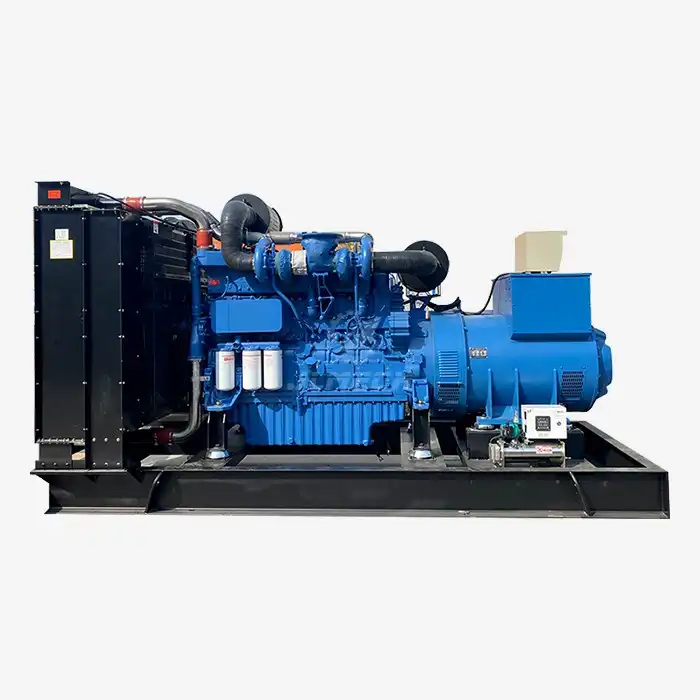 VIEW MOREBackup diesel unit
VIEW MOREBackup diesel unit VIEW MOREElectric control diesel generator
VIEW MOREElectric control diesel generator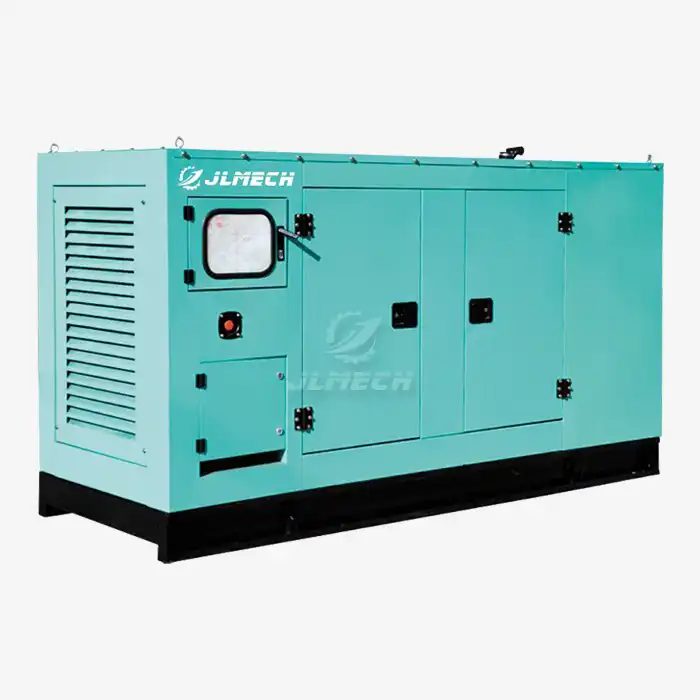 VIEW MORESuper Silent Type Diesel Generator
VIEW MORESuper Silent Type Diesel Generator VIEW MORE100kVA Silent Diesel Generator
VIEW MORE100kVA Silent Diesel Generator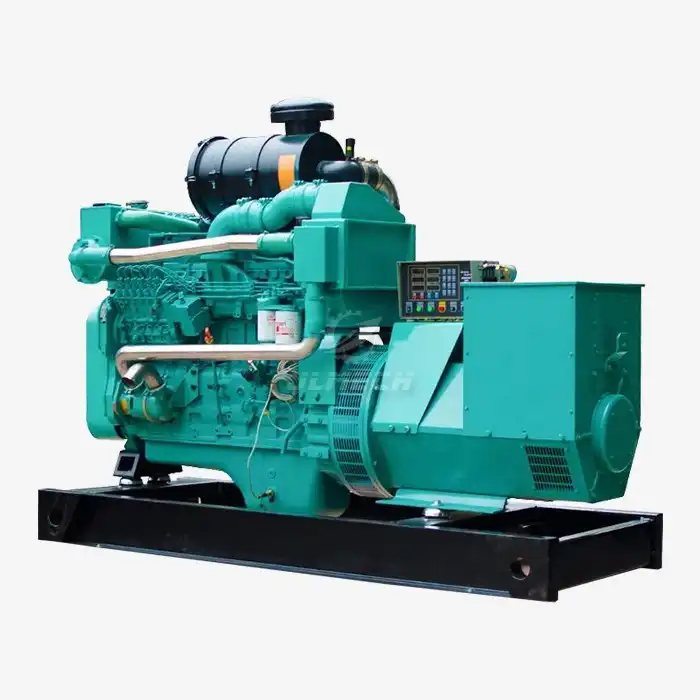 VIEW MOREMarine Portable water-cooled generator
VIEW MOREMarine Portable water-cooled generator VIEW MORE40v Leaves blower
VIEW MORE40v Leaves blower VIEW MOREshangchai diesel generator 100KW
VIEW MOREshangchai diesel generator 100KW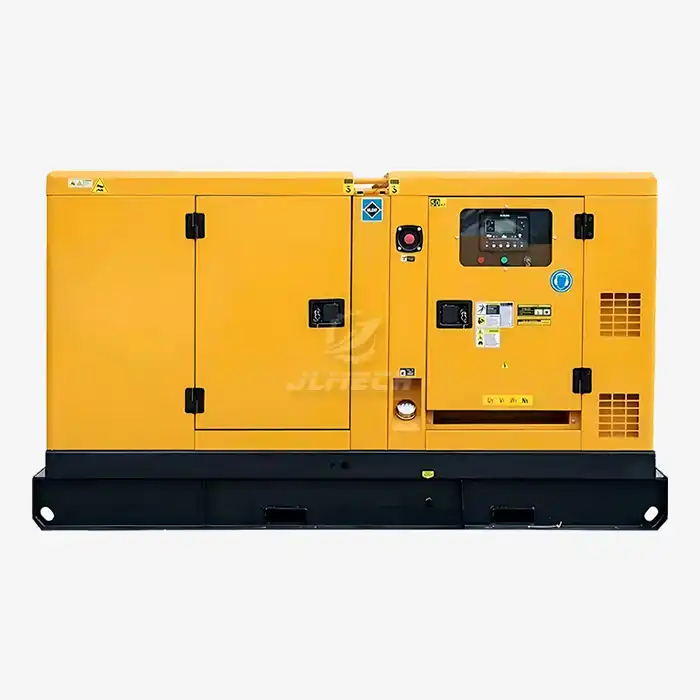 VIEW MOREdiesel power generator set
VIEW MOREdiesel power generator set



